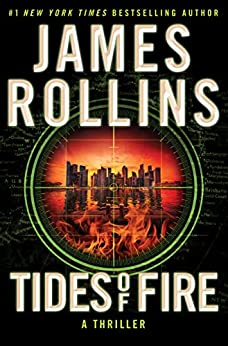More on this book
Community
Kindle Notes & Highlights
Species of black coral were considered to be the longest-living marine animals. A polyp species in Hawaiian waters had been dated at 4,270 years old and continued to thrive.
It reminded him of something that Painter Crowe, the director of Sigma, had once warned him: Despite appearances, the world is only one disaster away from barbarism.
It would allow the Cormorant to stay in continual contact with the world above—though, the deeper they traveled, the longer the lag time would stretch. Once at the bottom, it would take seven seconds for an SOS to reach the surface, and another seven seconds for the Titan X to respond with a sincere we’ll miss you.
The heavy landers had descended in a freefall all the way to the bottom. The trio had been named Huey, Dewey, and Louie, after the Disney ducks—because scientists considered themselves capable of humor. This proved otherwise.
Datuk murmured behind her, “Akah Bahar.”
“It’s the Malay name for black coral—which seemed appropriate.” Phoebe kept her gaze outside. “Why? What does it mean?” “It means Root of the Sea.” Phoebe stared at the vast expanse and corrected him. “This looks more like the Root of the Entire World.”
“While octopuses are classified as cephalopods, they make no evolutionary sense. Their huge brains, their complicated nervous systems, their camera-like eyes, even their ability to camouflage—all these features just suddenly appeared on the evolutionary scene. Octopuses can even edit their own RNA to help them adapt to their environment, unlike any other organism. Across the board, they’re light-years ahead in evolution compared to all their cephalopod relatives.”
Painter repeated his question. “Why do you need to stay out there?” Gray answered as best he could, knowing it to be true. “To discover a way to speak to the gods.”
Who would dare shoot inside a space surrounded by pulverizing pressure? She looked up at Kowalski’s stern face, smoke wafting from a cigar. This guy would.


